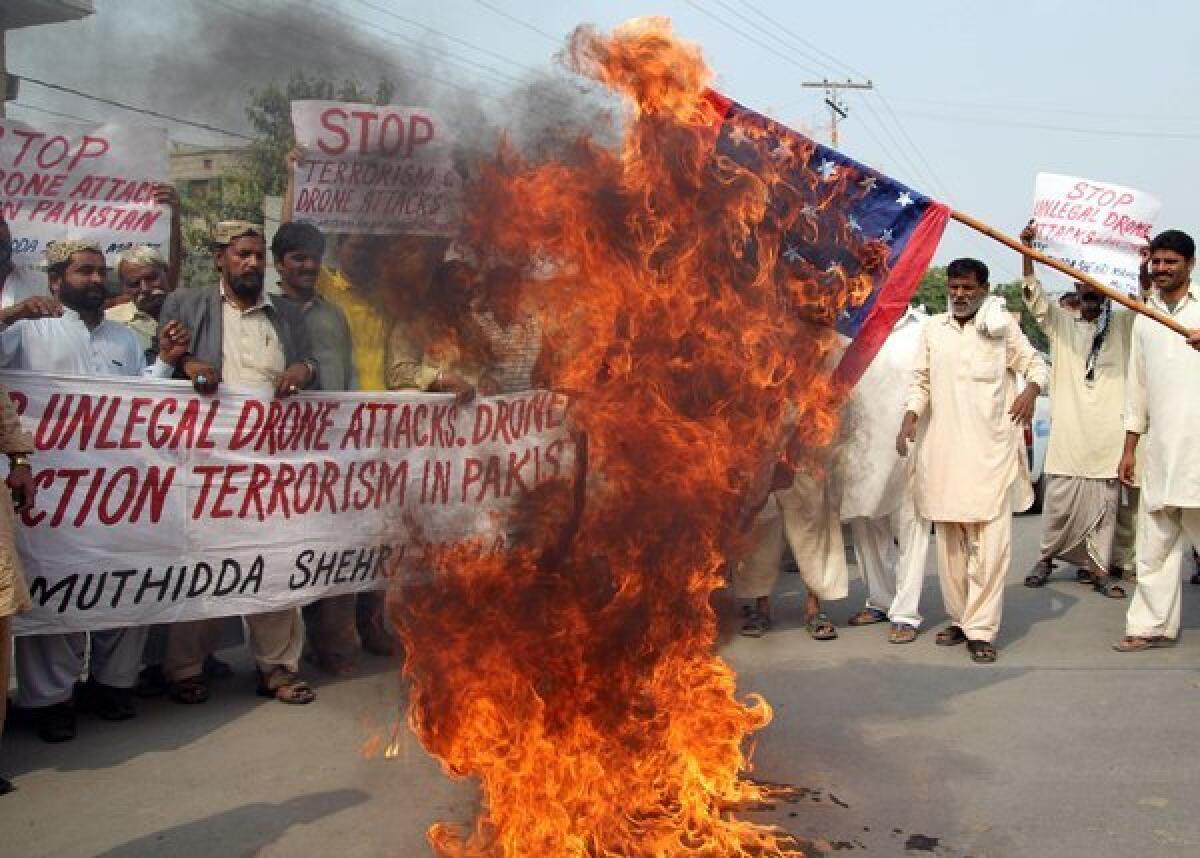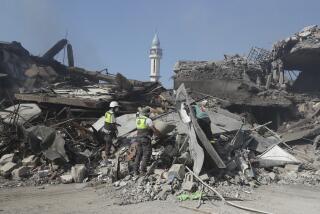Pakistanâs new low numbers on drone civilian deaths stir debate

ISLAMABAD, Pakistan -- A claim by the Pakistani government this week that 67 civilians died in drone strikes over the last five years, a surprisingly low number given previous casualty estimates, has sparked controversy, skepticism and speculation that American pressure may be behind the figure.
Adding to the debate, a drone strike early Thursday in North Waziristan near the border with Afghanistan -- the first in a month -- killed three people. Their identity was not immediately known. Pakistanâs Foreign Ministry condemned the attack. âThere is an across-the-board consensus that drone attacks must end,â it said in a statement.
Drones are a politically charged issue, viewed by many Pakistanis as inaccurate, an insult to national pride and a sign of the nationâs inability to safeguard its borders against foreign meddling. Islamabad regularly criticizes the attacks in public, even though itâs believed to have supported and even provided targeting data for some past strikes.
On Wednesday, the Ministry of Defense told parliament that only 3% of the 2,227 people killed in 317 drone attacks since 2008 were civilians â far lower than the 16% to 25% some international groups have estimated. In a written statement, the ministry also said no civilians were killed in such attacks since January 2012.
The areas along the border with Afghanistan where drones most commonly operate are off limits to journalists and aid groups, making it difficult to verify the identities or numbers of those killed.
âThese figures are ridiculous,â said Mansur Khan Mahsud, director of the FATA Research Center, an Islamabad-based think tank researching militancy in Pakistanâs tribal areas.
âForty people were killed in one drone strike alone in March 2011 in the Datta Khel area of North Waziristan,â he said. âOf those, only five were militants.â
In June 2009, he added, drones attacked a funeral in South Waziristan, killing another 60 civilians.
The 67 figure undermines the governmentâs own argument that drone strikes must end because popular anger over civilian deaths fuels radicalization, militancy and more recruits for the insurgents, some analysts said.
Ultimately the biggest beneficiary of this weekâs questionable disclosure may be the Taliban and other militant groups, analysts said, by supporting their argument that the Pakistan government is working with the Americans to target and deploy drones and canât be trusted.
It could also undermine proposed talks between the government and the Taliban aimed at stemming the violence, they added.
âNow, they would blame Pakistan and its security agencies for being complicit in the drone program,â said Rahimullah Yusufzia, a defense analyst and journalist based in the Pakistani city of Peshawar.
A survey released in September by Gilani Research Foundation of 2,626 men and women in rural and urban areas found 71% of respondents believed Pakistan should not cooperate with the United States in fighting terrorism compared with 27% in favor and 2% who didnât answer.
Washington views the drone program in Pakistan as a vital weapon against Al Qaeda and Taliban militants who take refuge in the lawless northeast to mount cross-border attacks on American troops in neighboring Afghanistan. President Obama has said the program is kept on a âvery tight leashâ and that without it, the U.S. would have had to resort to more intrusive military action.
Some residents of the tribal areas also say drones are an effective way to kill militants without costly or disruptive military operations.
In response to the controversy, Pakistani Information Minister Pervaiz Rashid told reporters late Wednesday that the government had not changed its opposition to drones and remains hopeful their use will end soon.
Qaisar Jamal, a parliamentarian with the Pakistan Tehreek-e-Insaf party from tribal areas in the northwest, said Prime Minister Nawaz Sharif may have been fed these numbers by U.S. authorities during his visit last week to Washington, even though during the trip he called for an end to the strikes.
The next step could see Sharif stop pressuring the Americans altogether to end the strikes, he said, adding that his own research suggests more than 200 women and children under the age of 5 have been killed in recent years.
âEvidently the government doesnât consider women and children to be civilians,â he said. âThis shows they will go to any length to please the Americans.â
Many sources appear to dispute the latest government figures. The London-based Bureau of Investigative Journalism has estimated that between 407 and 926 civilians have been killed by drones in Pakistan since 2008, or between 16% and 25% of all deaths.
U.N. special rapporteur Ben Emmerson said in a report this month that 400 of 2,200 people killed in drone attacks since 2004 were civilians when the program started, about 18%, quoting Pakistani government sources.
âThe government is mouthing the Americansâ language,â Jamal said. âItâs lost all sorts of credibility with this report.â
ALSO:
Israel plans massive settlement push
Israeli soldiers fatally shoot Palestinian in West Bank
âThe end of the British breakfast as we know itâ -- Horrors!
Twitter: @MarkMagnier
Special correspondent Sahi reported from Islamabad and Times staff writer Magnier reported from New Delhi.
More to Read
Sign up for Essential California
The most important California stories and recommendations in your inbox every morning.
You may occasionally receive promotional content from the Los Angeles Times.










